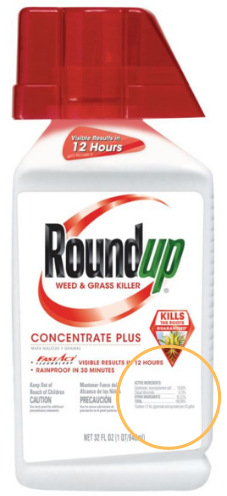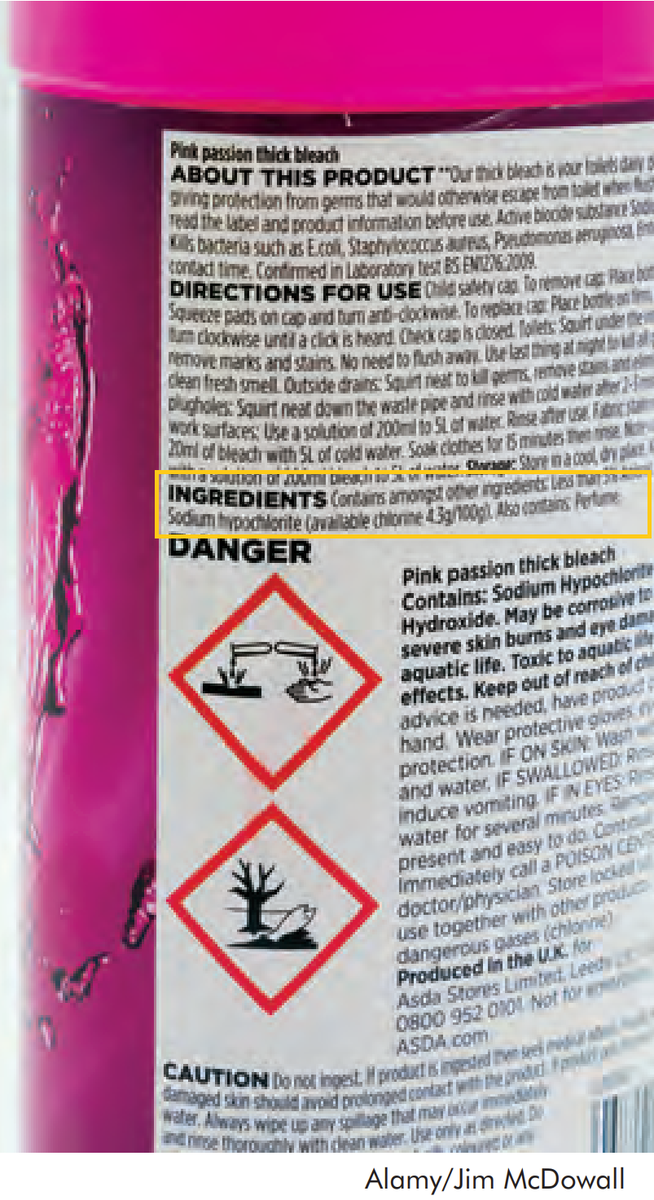Gateway on Pesticide Hazards and Safe Pest Management
How To Find Ingredients in Pesticide Products
Beyond Pesticides offers resources below to evaluate the health and ecological effects of specific chemical exposure from ACTIVE INGREDIENTS in pesticide products, as well as regulatory information and supporting scientific documents. Because various pesticide products can contain more than one active ingredient, it is important to READ the LABEL to determine chemical components.
With 192 different active ingredients and counting, it is essential to establish the connection between the use of these chemicals and their respective hazards.
View the step-by-step guide on how to search for the active ingredient(s) in pesticide products below:
- Go to U.S. EPA's Pesticide Product and Label System and enter the product name. The generic product name may vary.
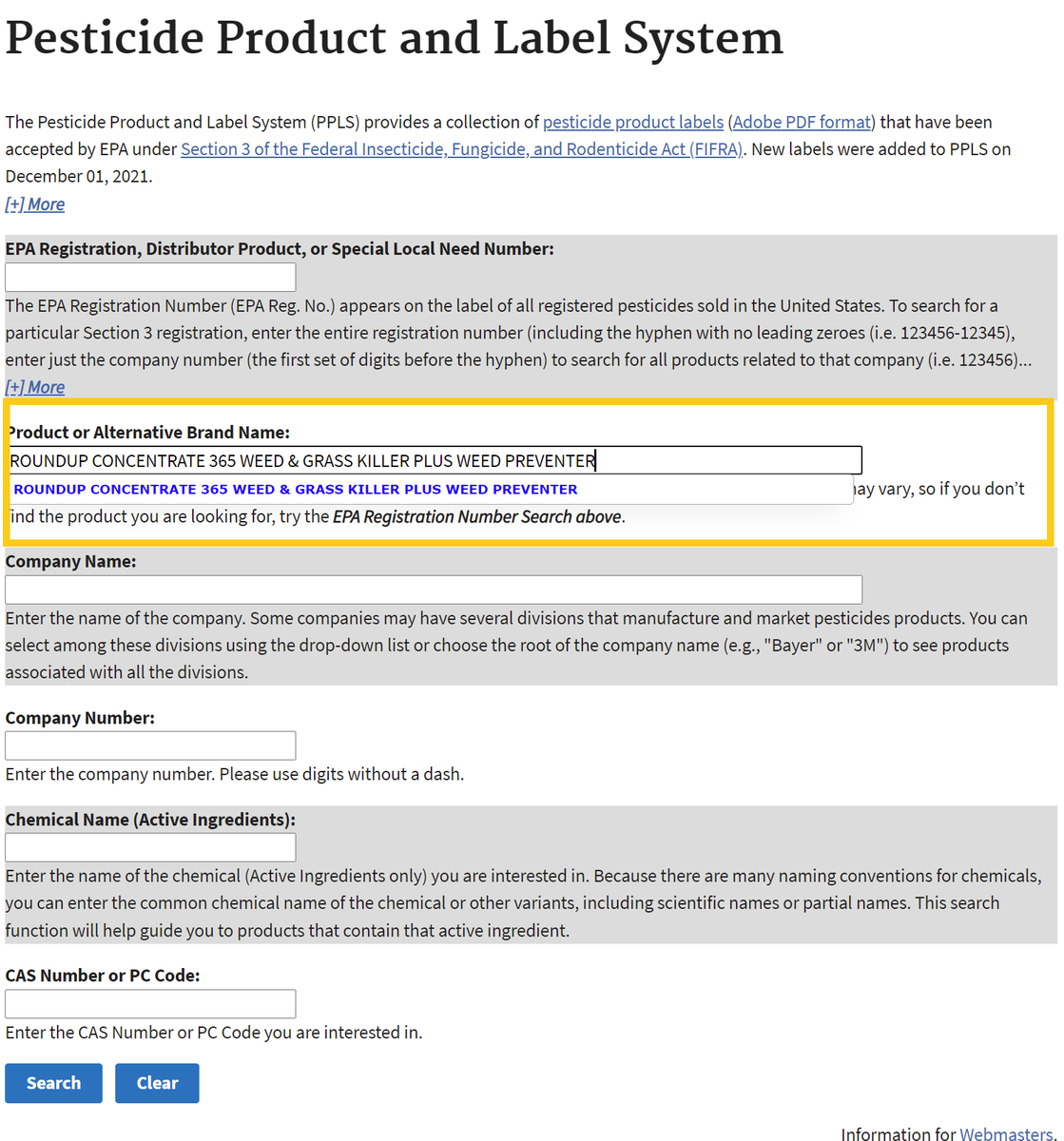
- After searching, click on the chemical ingredients tab or the link for the most recent label to find Active Ingredients.
Chemical List Label List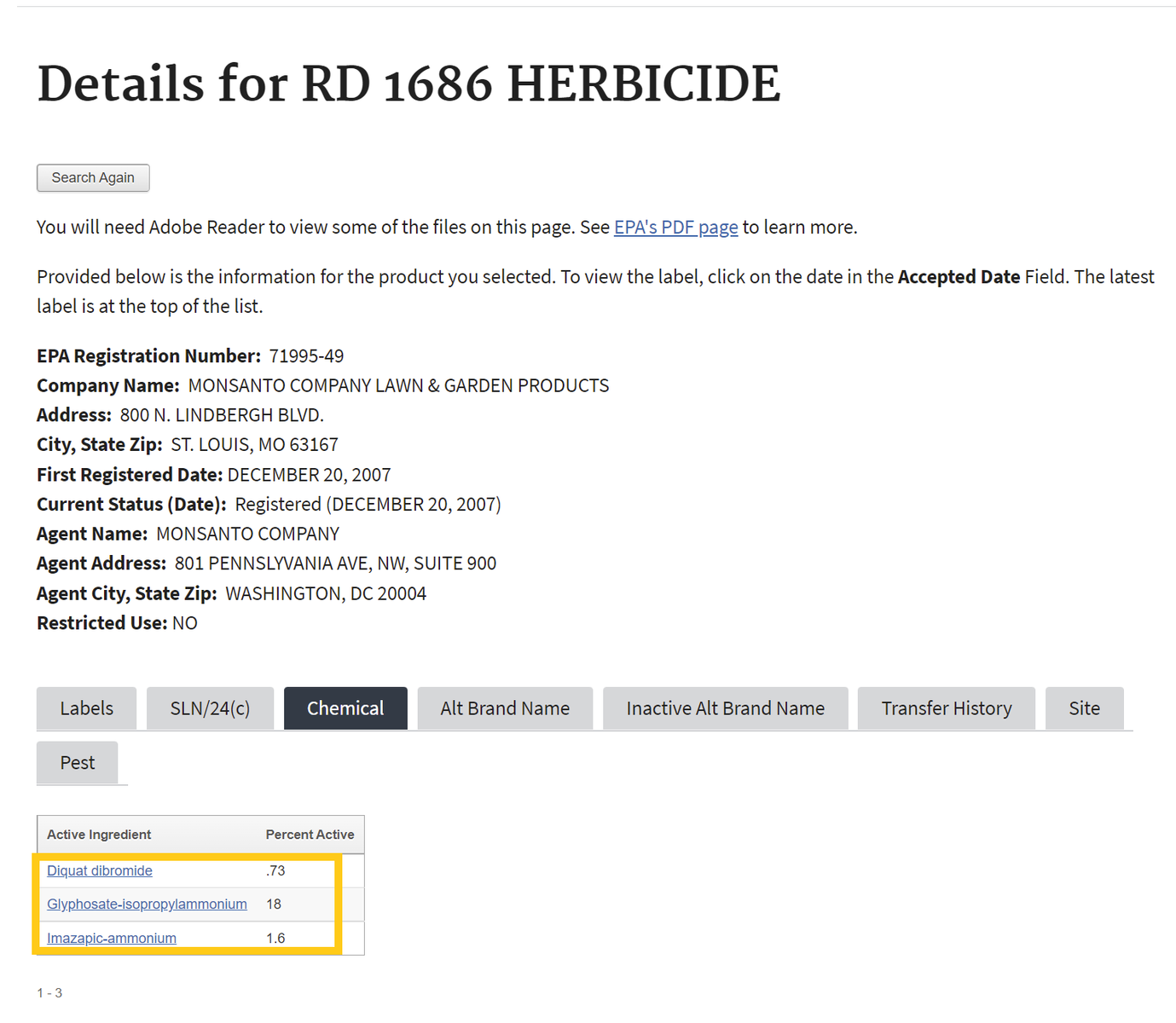
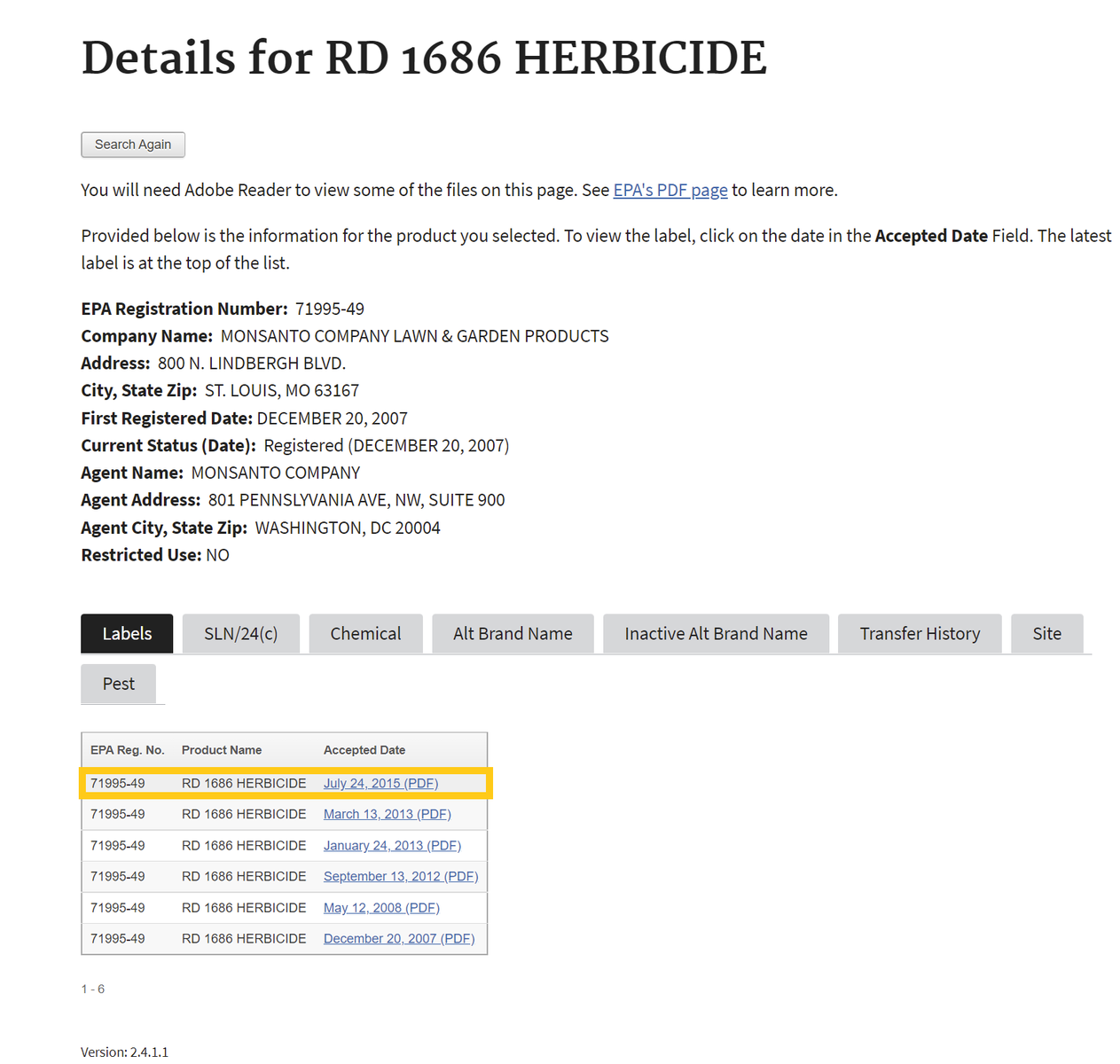
If one selects the chemical ingredients tab, skip to Step 4 . If not, proceed to step number 3 - To find the active ingredient(s) on the label, search for the page in the document containing the date of registration. Usually, the active ingredients section occurs within the first few pages of the label document.
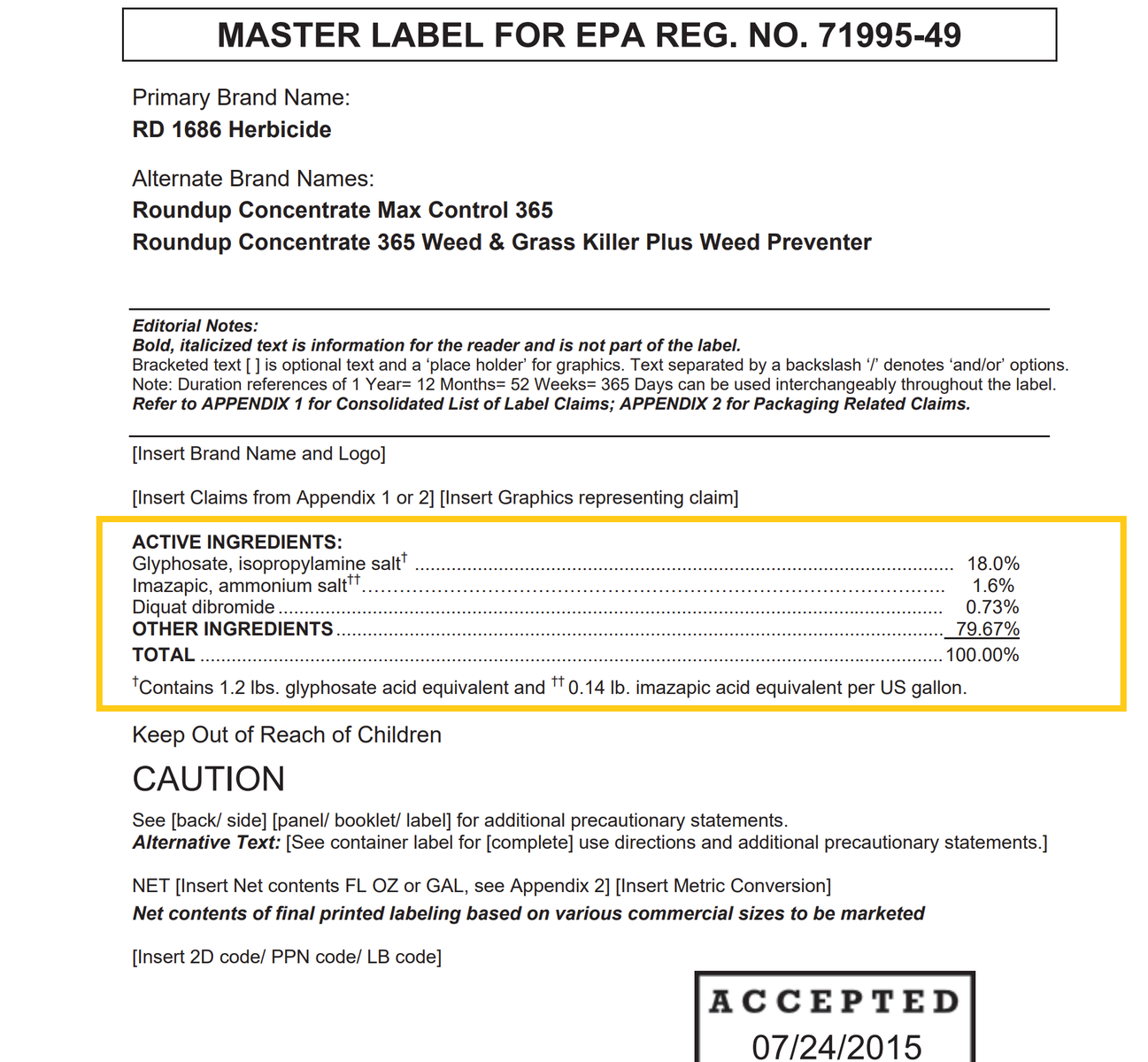
- Return to the Beyond Pesticides Gateway and search for the active ingredient name in the yellow box to the right or from the list below.
MCPA
General Information
- Product Names:
- Chemical Class: Phenoxy herbicide
- Uses: Alfalfa, barley, clover, flax, lespedeza, oats, grass, peas, rice, rye, sorghum, trefoil, triticale, and wheat, as well as grass grown for seed, to control a wide spectrum of broadleaf weeds. registered for use on residential lawns, sod farm turf, golf courses, rights-of-way, pasture, and rangeland.
- Alternatives: Agriculture/pasture, lawns, rights-of-way
- Beyond Pesticides rating: Toxic
Health and Environmental Effects
- Cancer: Not documented
- Endocrine Disruption: Not documented
- Reproductive Effects: Yes (4)
- Neurotoxicity: Yes (8)
- Kidney/Liver Damage: Yes (4)
- Sensitizer/ Irritant: Yes (8)
- Birth/Developmental: Not documented
- Detected in Groundwater: Yes (27)
- Potential Leacher: Yes (4)
- Toxic to Birds: Yes (8)
- Toxic to Fish/Aquatic Organisms: Not documented
- Toxic to Bees: Yes (20)
Residential Uses as Found in the ManageSafe™ Database
Additional Information
- Regulatory Status:
- Supporting information:
- Extoxnet MCPA Factsheet (Extension Toxicology Network, 1996)
- World Health Organization (WHO) Chemical fact sheets: MCPA (2022)
- PAN Pesticides Database: MCPA (Pesticide Action Network)
- Studies:
- A Case–Control Study of Non-Hodgkin Lymphoma and Exposure to Pesticides Journal of the American Cancer Society, 1999.
- Birth Malformations and Other Adverse Perinatal Outcomes in Four U.S. Wheat-Producing States.. Schreinemachers, D. 2003. Environmental Health Perspectives, 111(9).
- Exposure to pesticides as risk factor for non-Hodgkin's lymphoma and hairy cell leukemia: pooled analysis of two Swedish case-control studies.. Hardell, L., et al. 2002. Leuk Lymphoma 43(5):1043-1049
- Kidney biomarkers in MCPA-induced acute kidney injury in rats: Reduced clearance enhances early biomarker performance. Wunnapuk, K. (2014) Kidney biomarkers in MCPA-induced acute kidney injury in rats: Reduced clearance enhances early biomarker performance, Toxicology Letters. Available at: https://www.sciencedirect.com/science/article/abs/pii/S0378427414000290.
- Short-term oral and dermal toxicity of MCPA and MCPP. Verschuuren, H. et al. (1975) Short-term oral and dermal toxicity of MCPA and MCPP, Toxicology. Available at: https://www.sciencedirect.com/science/article/abs/pii/0300483X75900360.
- Proximity to residential and workplace pesticides application and the risk of progression of Parkinson's diseases in Central California. Li, S. et al. (2022) Proximity to residential and workplace pesticides application and the risk of progression of parkinson’s diseases in Central California, Science of The Total Environment. Available at: https://www.sciencedirect.com/science/article/pii/S0048969722079542.
- A review of the pesticide MCPA in the land-water environment and emerging research needs. Morton, P. et al. (2020) A review of the pesticide MCPA in the land‐water environment and emerging research needs, WIREs Water. Available at: https://wires.onlinelibrary.wiley.com/doi/full/10.1002/wat2.1402.
- Estimating the aquatic risk from exposure to up to twenty-two pesticide active ingredients in waterways discharging to the Great Barrier Reef. Warne, M. et al. (2023) Estimating the aquatic risk from exposure to up to twenty-two pesticide active ingredients in waterways discharging to the Great Barrier Reef, Science of The Total Environment. Available at: https://www.sciencedirect.com/science/article/pii/S0048969723032552.
- Toxicological assessment of bromoxynil and 2-methyl-4-chlorophenoxyacetic acid herbicide in combination on Cirrhinus mrigala using multiple biomarker approach. Afzal, F., Ghaffar, A., Jamil, H., Abbas, G., Tahir, R., & Ataya, F. S. (2024). Toxicological assessment of bromoxynil and 2-methyl-4-chlorophenoxyacetic acid herbicide in combination on Cirrhinus mrigala using multiple biomarker approach. The Science of the total environment, 926, 172019. https://doi.org/10.1016/j.scitotenv.2024.172019
- Broad-scale pesticide screening finds anticoagulant rodenticide and legacy pesticides in Australian frogs. Rowley, J. et al. (2024) Broad-scale pesticide screening finds anticoagulant rodenticide and legacy pesticides in Australian frogs, Science of The Total Environment. Available at: https://www.sciencedirect.com/science/article/pii/S004896972402672X.








.png)
